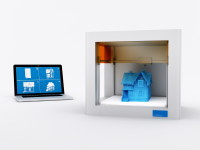Categories
- Additional Insured
- ChildrensProducts
- Claims Made
- Cyber Insurance
- Dietary Supplements and Nutraceuticals
- Ecigarettes
- Firearms Insurance
- Food Products
- Foreign Products Liability
- Foreseeable Misuse
- Frivolous Lawsuits
- General Liability
- Industrial
- Infographics
- Intellectual Property
- Looking ahead
- Marijuana Liability
- Medical Products
- Mutual Indemnification
- Nano Technology
- News
- Online Sellers Insurance Requirements
- Outsourcing
- Piercing The Corporate Veil
- Pollution Liability
- Product liability
- Product Recall
- Retail Chain Store
- Start-Up Business
- Statute of Repose
- Surplus Lines Insurance
- Technology
3D Printers Will Change the World as We Know It

And what risks do 3D printers pose to businesses?
3D printing (or additive manufacturing) is a technology that will change society so profoundly it defies the imagination. Reading “The Printed World” showed me the possibility innovation where it will be just as cheap to produce single items as thousands of items. That will undermine the entire concept of economies of scale and how businesses bring products to the market.
Think of a world where products no longer have go through the start-up steps or costs to be manufactured. Or where anyone with imagination can bring a product to reality and manufacture 10 units to determine if there is a demand for it. No molds or lathes required, just a computer and a 3D printer. Inventors and start-ups will thrive as never before because making and trying new products will be less risky and expensive.
Looking toward the immediate future
For example, to make a plastic part you need to create the mold. Several molds may be needed before the product is completed and brought to market. To offset the fixed costs required to make the molds, assemble, and deliver the product to market, a product must be mass produced and sold by the thousands. That creates the economies of scale.
But with 3D printing, you pull up the blueprint on your computer screen, make the necessary changes to the shape and color, and then press print. The 3D printer builds the product by progressively adding material, one layer at a time. No molds or factories required.
Today, 3D printers are primarily used to build prototypes. Then current manufacturing techniques such as molds and reduction machining build the final products. Currently, only 20 percent of the output of 3D printers is used to build a final product. However, it’s estimated that by 2020 final products produced by 3D printers will grow to 50 percent. It is possible that in 50 years complete planes, trains and automobiles and anything else you can imagine will be made entirely from 3D printers?
Looking further ahead
The other great thing about 3D printing is it’s not limited to consumer products. 3D printing has already progressed into the areas of human health. It may one day be standard practice to print replacement parts for the human body from layers of human cells. Apparently, a company called Organovo already managed to make blood vessels and cardiac tissue on a printer that dispenses cells instead of ink.
Potential risks to businesses
From an insurance point of view, there are monumental hurdles ahead. How can businesses protect intellectual property rights if anyone with a 3D printer can make an exact replica of their products? If products can be duplicated so quickly, will businesses push to get products to market quicker, forgoing valuable testing to ensure product safety? How will patent offices keep up with all the new products? And will businesses want to apply for patents when facing the risk of potential competitors being notified of their new products?
Technology solves problems while creating new ones.
Posted By: Paul L. Owens-
 Click the Button Below to Get Your
Click the Button Below to Get Your
No-Obligation Quotes from Among the
Top 18 Leading Insurance Carriers Today -
Recent Industry News
- Amazon Sellers and Vendors Strategy Including Insurance Requirements
- Walmart Sellers Insurance
- Product Liability Limit Requirements of Online Sellers
- State-by-State Product Liability Analysis of Laws Impacting Businesses
- Children’s Product Liability: Strange Claims and Need for Insurance
- Product Liability vs. Environmental Insurance for the Chemical Industry
- Product Liability in the 3D Printing Industry: New Materials and Their Significance
- Product Liability Concerns in Agricultural Equipment Enhanced with Artificial Intelligence
- Navigate Product Liability in Battery and Solar Industry
- Cyber Risk Insurance Is Essential Business Insurance in Today’s Modern World
Monthly News Archives
